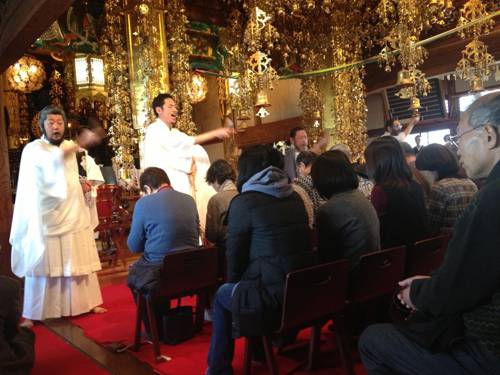
FAQ About The Role of Ritual Chanting in Cultural Practices

What is ritual chanting?
Ritual chanting refers to the repetition of words, phrases, or sounds with a specific pattern or rhythm, often as part of a spiritual, religious, or cultural ceremony. It is employed in various traditions around the world to evoke spiritual states, unite participants in a shared experience, and preserve oral histories or teachings.

How does ritual chanting function in religious practices?
In religious practices, ritual chanting often serves as a form of prayer, meditation, or devotion. It is used to honor deities, convey holy teachings, or facilitate worship. Chanting helps focus the mind, promotes a sense of unity among worshippers, and establishes a sacred atmosphere conducive to spiritual engagement.

Which cultures commonly incorporate ritual chanting?
Many cultures incorporate ritual chanting into their spiritual practices, including Hindu, Buddhist, Christian, Islamic, and Indigenous traditions worldwide. Each culture has unique chants specific to their beliefs and customs, reflecting their histories, languages, and spiritual teachings.

What are some examples of ritual chants in Hinduism?
In Hinduism, ritual chants such as the 'Gayatri Mantra,' 'Om,' and 'Maha Mrityunjaya Mantra' are prominent. These chants are often recited during pujas (worship), meditation, and religious ceremonies to invoke divine energies, offer gratitude, or seek spiritual guidance and protection.

Why is chanting important in Buddhism?
Chanting in Buddhism plays a vital role in meditation and spiritual study. Chants often include texts from sutras or mantras like 'Om Mani Padme Hum.' They help cultivate concentration, maintain the teachings' oral tradition, and foster a sense of communal practice among practitioners.

How does chanting differ between religious and secular contexts?
In religious contexts, chanting is typically centered around spiritual themes, sacred texts, or the worship of deities. In secular contexts, however, chanting might be used for communal solidarity, artistic expression, or mindfulness practices without necessarily having a religious connotation.

Are there scientific studies on the effects of ritual chanting?
Yes, scientific studies have indicated that ritual chanting can have positive effects on mental health, including reducing stress and anxiety, improving mood, and enhancing focus and concentration. It is also found to synchronize brainwaves, promoting a state of relaxation and well-being.

What is the historical significance of chanting in Indigenous cultures?
In Indigenous cultures, chanting is often a means of storytelling, preserving oral traditions, and connecting with ancestral spirits. It serves as a vital tool for cultural transmission and maintaining the community's spiritual heritage and identity across generations.

How is chanting used in modern wellness practices?
In modern wellness practices, chanting is often incorporated into yoga, meditation, and mindfulness exercises. It is used to enhance focus, achieve a meditative state, and promote emotional balance and inner peace, drawing from ancient traditions to support contemporary well-being.

What role does chanting play in the Christian tradition?
In Christianity, chanting is significant in liturgical settings such as the recitation of Psalms, Gregorian chants, and hymns. It helps convey theological teachings, enhance the worship experience, and foster spiritual reflection and unity within the congregation.

Why is the pronunciation important in ritual chanting?
Pronunciation is crucial in ritual chanting because the sound vibrations produced by correctly articulated words are believed to hold spiritual significance and power. Accurate pronunciation is thought to enhance the chant's efficacy in reaching its intended spiritual or meditative purpose.

What are some common misconceptions about ritual chanting?
A common misconception is that ritual chanting is limited to religious practices when it also holds historical, cultural, and secular significance. Another misconception is that chanting is purely mystical; however, it often involves structured practices with psychological and social benefits.

Can non-religious individuals benefit from chanting?
Yes, non-religious individuals can benefit from chanting as it promotes relaxation, reduces stress, and enhances concentration. Many people incorporate chanting into mindfulness and meditation practices, focusing on the rhythmic and sonic aspects rather than spiritual interpretations.

How is ritual chanting preserved and passed down across generations?
Ritual chanting is preserved through oral tradition, recordings, and written texts. Elder community members often teach younger generations the chants' specific rhythms, pronunciations, and meanings to ensure continuity and accuracy in their cultural transmission.

What is the connection between chanting and meditation?
Chanting is often intertwined with meditation, as it provides a focal point for the mind, aiding in concentration and meditative states. The rhythmic and repetitive nature of chants helps practitioners connect with their breath and cultivate mindfulness, deepening their meditation experience.

What is the significance of mantras in ritual chanting?
Mantras are a significant component of ritual chanting, particularly in Hinduism and Buddhism. These are sacred phrases or sounds believed to possess spiritual power. Chanting mantras serves various purposes, such as invoking divine presence, protection, or achieving deep meditation.

Is there a difference between chanting and singing?
Chanting and singing are similar in that they both involve vocal expression, yet they differ in intent and style. Chanting usually involves a monotone or repetitive vocal pattern focused on rhythm and resonance, while singing often incorporates melody and harmony aimed at artistic expression.

How does chanting help in community building and social cohesion?
Chanting can enhance community building and social cohesion by creating a shared experience that strengthens group identity and unity. It fosters collective participation and promotes a sense of belonging, making it an effective tool for communal gatherings and ceremonies.

What is the role of instruments in ritual chanting?
Instruments can play a supportive role in ritual chanting by providing rhythm, harmony, or sonic depth. They enhance the overall experience, assist in maintaining the pace, and enrich the chant's acoustic presence, as seen in many cultural practices where drums, bells, or string instruments are used.

Can ritual chanting have therapeutic applications?
Yes, ritual chanting is used in therapeutic applications, often termed "sound therapy." It can promote emotional healing, reduce anxiety, and support mental clarity. The vibrational qualities of chanting are thought to affect the physical and emotional state positively, making it a valuable tool in holistic health approaches.
